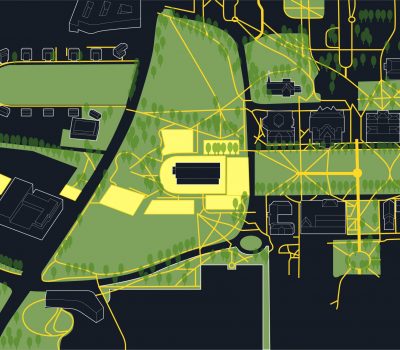Towards a city of proximity…
The 15-minute city, the concept coined by Carlos Moreno and adopted by the city of Paris as a model during the COVID-19 pandemic, has had global resonance. However, it is not a new concept for urban planning. Models and strategies ranging from Howard’s Garden City or Perry’s Neighbourhood Unit, to the city of short distances (stadt der kurzen wege) in Germany, italy’s Planificazione Temporali or Gender Urbanism, have all been based on proximity..
Our work focuses on questions such as: What is the genealogy of the city of proximity? What are the successful cases? Why are they so notable and so scarce? What are the contributions and weaknesses of each one? How to strengthen and integrate into planning a principle that seems essential for the resilience of cities?
News
by Patxi Lamíquiz | 13 february 2023
Foundations
In 1898 Ebenezer Howard published “To-morrow: a Peaceful Path to Real Reform” (later “Garden Cities of To-morrow”) and introduced his urban and territorial model of Garden Cities into the planning debate. With rural migration and the poor residential conditions of the working class as a starting point, Howard proposes the decentralisation of the urban population into nuclei of no more than 400 hectares of urban land surrounded by 2,000 hectares of agricultural land. These nuclei would house a maximum population of 32,000 inhabitants and would be connected to the Central City and to each other by railways.
Read more:
Howard, Ebenezer (1902) Garden Cities of To-morrow
In the late 1920s, at the dawn of the automobile era, Clarence Perry coined the concept of the Neighbourhood Unit, a planning scheme aimed at designing the local as its own entity within the city as a whole. Perry defined four basic pillars for its design: the primary school, green spaces, local commerce and the design of the residential environment. The primary school, in the centre, served to size the total population and, although he did not establish a specific maximum area, he did stipulate that the Neighbourhood Unit should be delimited by arterial traffic routes and crossed by a network of streets designed for pedestrian mobility.
The city (and region) of short distances (stadt der kurzen Wege) emerged in the 1990s, in the midst of the debate on sustainable urban development. It is defined as a city or region in which conditions exist that make it possible to carry out everyday tasks and to reach the place of work or study in a short time and without having to rely on the car. Its key characteristics are a compact urban structure, a mix of uses, accessibility to services, attractive design of public space and public transport-oriented regional development.
newsletter
Subscribe to our newsletter to be updated on the latest news from our project:








